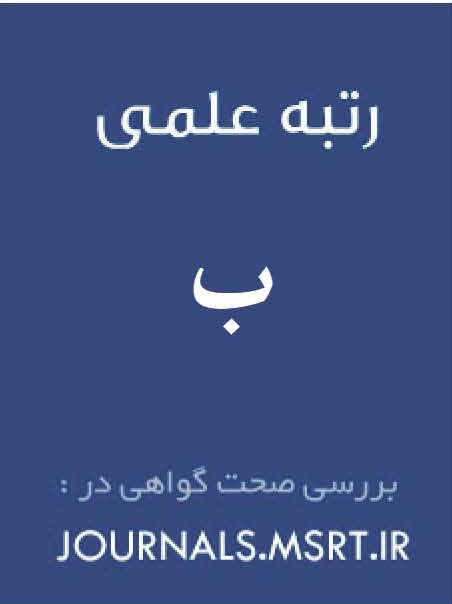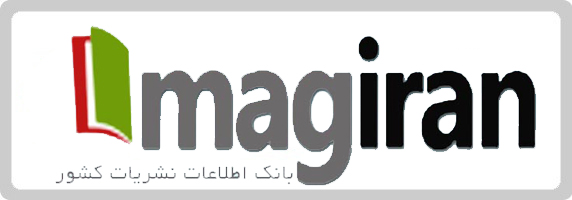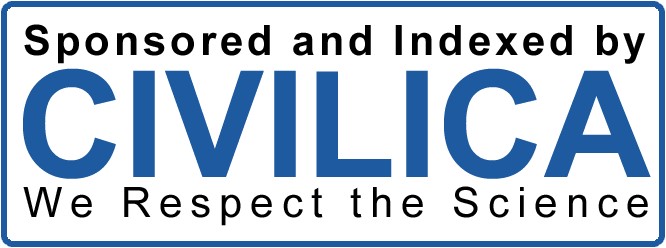The Effectiveness of Group-Based Behavioral Activation Therapy on Self-Efficacy and Quality of Life in Cardiovascular Patients
Keywords:
Behavioral activation therapy, Self-efficacy, Quality of life, Cardiovascular patientsAbstract
Objective: The present study aimed to examine the effectiveness of group-based behavioral activation therapy on self-efficacy and quality of life in cardiovascular patients.
Methods and Materials: The research method was quasi-experimental with a pretest-posttest control group design. The statistical population included all male and female cardiovascular patients hospitalized at Imam Reza Hospital in Mashhad during the second half of 2024. From this population, 30 individuals were selected using purposive sampling and randomly assigned to either the experimental group (n = 15) or the control group (n = 15). Participants in the experimental group received group-based behavioral activation therapy for eight 90-minute sessions, held twice a week. The control group was placed on a two-month waiting list. Data were collected using the General Self-Efficacy Questionnaire (Sherer & Maddux, 1982) and the Quality of Life Questionnaire (Ware & Sherbourne, 1992). Research data were analyzed using multivariate analysis of covariance (MANCOVA).
Findings: The findings revealed that after controlling for pretest effects, there were significant differences between the experimental and control groups in posttest scores for self-efficacy and the quality-of-life components (including physical functioning, social functioning, emotional role functioning, mental health, vitality, and general health). However, no significant differences were observed in the components of physical role functioning and bodily pain.
Conclusion: Overall, based on the results of this study, it can be concluded that group-based behavioral activation therapy can be effective in enhancing self-efficacy and quality of life in cardiovascular patients.
Downloads
References
Abedi, G., Ataeifar, R., & Ghamari, M. (2024). The Effectiveness of Group Marital Conflict Resolution Training Based on Choice Theory on Emotional Divorce and Hope for Life in Married Women. International Journal of Education and Cognitive Sciences, 5(3), 136-146. https://doi.org/10.61838/kman.ijecs.5.3.10
Alizadeh, I., Salari, A., Ahmadnia, Z., & Moaddab, F. (2020). An Investigation into Self-efficacy, Clinical Decision-making and the Level of Relationship between them among Nurses in Guilan Province [Research]. Journal of Guilan University of Medical Sciences, 29(2), 38-49. http://journal.gums.ac.ir/article-1-2289-en.html
http://journal.gums.ac.ir/article-1-2289-en.pdf
Arasteh, Z., & Azadi, M. (2019). Evaluation of the effect of neurofeedback on quality of life and anxiety in patients with multiple sclerosis. Razi Journal of Medical Sciences, 26(9), 88-101. https://www.magiran.com/paper/2090282/
Bays, H. E., Kirkpatrick, C., Maki, K. C., Toth, P. P., Morgan, R. T., Tondt, J., Christensen, S. M., Dixon, D., & Jacobson, T. A. (2024). Obesity, dyslipidemia, and cardiovascular disease: A joint expert revi ew from the Obesity Medicine Association and the National Lipid Associ ation 2024. Obesity pillars, 10, 100108. https://doi.org/10.1016/j.obpill.2024.100108
Faraziani, F., & Eken, Ö. (2024). Physical Activity, Cognitive Decline, and Quality of Life in Older Adults. International Journal of Sport Studies for Health, 7(2), 13-22. https://doi.org/10.61838/kman.intjssh.7.2.2
Golestanifar, S. (2025). Comparison of the Effectiveness of Emotion-Focused and Compassion-Focused Couple Therapy on Covert Relational Aggression and Psychological Well-Being in Cardiovascular Patients. Injoeacs, 6(1), 157-165. https://doi.org/10.61838/kman.ijecs.6.1.16
Janbozorgi, F., Darbani, S. A., & Parsakia, K. (2020). The structural model of predicting family health based on communication patterns and self-efficacy with the mediating role of self-compassion in women. Psychology of Woman Journal, 1(3), 66-80. http://psychowoman.ir/article-1-22-en.html
Khajeh Mirza, V., Safariyan Toosi, M. R., Najat, H., & Zandeh Del, A. (2020). Determining the effectiveness of behavioral activation therapy on the perception of classroom structure among female students with major depressive disorder. Journal of Disability Studies, 10, 243. https://jdisabilstud.org/browse.php?a_id=1918&sid=1&slc_lang=fa
Kharai, K., & Azizi, M. (2021). The effectiveness of behavioral activation therapy in a group format on depression, anxiety, and quality of life in female heads of households in Qaleh Ganj County. Quarterly Journal of Innovative Ideas in Psychology, 10(14), 1-8. https://jnip.ir/article-1-580-fa.html
Nguyen, H. M., Ngo, T. T. N., & Nguyen, T. T. (2024). Assessment of the Effects of Yoga on Self-Perceived Health of Elderly [Original Article]. Annals of Applied Sport Science, 12(1), 0-0. https://doi.org/10.61186/aassjournal.1318
Parsakia, K., Rostami, M., & Saadati, S. M. (2023). Validity and reliability of digital self-efficacy scale in Iranian sample. Journal of Adolescent and Youth Psychological Studies, 4(4), 152-158.
Pishgouyi, A. H., Zarei Shouraki, H., Zareiyan, A., Atashzadeh Shoorideh, F., & Farghani, M. (2018). Assessing the quality of life and its influencing factors in military personnel and their dependents with coronary artery disease in Tehran, 2016 - A cross-sectional study. Journal of Military Medicine, 20(2), 221-212. https://militarymedj.bmsu.ac.ir/article_1000742.html
PourMohammadGoochani, K., Mandani Zadeh Safi, S., & Noori, J. (2023). The effectiveness of positive psychotherapy on emotional awareness and recurrent negative thoughts in patients with cardiovascular diseases. Health Psychology, 12(45), 7-20. https://doi.org/10.30473/hpj.2023.61537.5396
Rafati, A., & Yousefi, A. (2018). Comparison of family functioning and quality of life of people with MS disease with healthy people. New Advances in Behavioral Sciences, 4(38), 83-100. https://ijndibs.com/article-1-378-fa.html
Rezagholiyan, M., Nemati, F., & Hashemi, T. (2025). Development of a Model of Students' Subjective Well-Being Based on Attachment Styles, Self-Compassion, and Emotion Regulation Styles with the Mediating Role of Quality of Life. Journal of Adolescent and Youth Psychological Studies (JAYPS), 6(1), 21-33. https://doi.org/10.61838/
Rezvanirad, S., & Shaker Dolagh, A. (2018). Comparison of Self-efficacy, Life Expectancy, and Death Anxiety in Cardiovascular Patients and Healthy Individuals. Journal of Cardiovascular Nursing, 7(12), 69-98. https://journal.icns.org.ir/browse.php?a_id=547&sid=1&slc_lang=fa
Seid, S. H., Rajaei, A., & Borjali, M. (2021). The effectiveness of group behavioral activation therapy on depression and identity crisis in patients with multiple sclerosis. Journal of Psychological Sciences, 19(95), 1518-1507. https://www.academia.edu/download/89950147/psychologi_v19n95p1507_en.pdf
Taheri, H., Taheri, E., & Amiri, M. (2017). Investigating the effectiveness of group behavioral activation therapy on social anxiety, avoidance, and negative evaluations in individuals with social anxiety symptoms. Journal of Principles of Mental Health, 19(5), 361-365. https://civilica.com/doc/1798584/
Türen, S., Çetinkaya Işık, F., & Türen, S. (2024). The Effect of Cardiac Rehabilitation Program on Quality of Life, Biophysiological Parameters, and Psychological Features in Patients with Cardiovascular Disease. Turkish Journal of Cardiovascular Nursing, 15(36), 25-32. https://khd.tkd.org.tr/jvi.aspx?pdir=kvhd&plng=eng&un=KVHD-18480&look4=
Xie, Q., Nie, M., Zhang, F., Shao, X., Wang, J., Song, J., & Wang, Y. (2024). An unexpected interaction between diabetes and cardiovascular diseases on cognitive function: A cross-sectional study. Journal of affective disorders, 354, 688-693. https://doi.org/10.1016/j.jad.2024.03.040
Ying, J., & Parsakia, K. (2024). Behavioral Activation Therapy: Boosting Happiness and Creativity Among College Students. KMAN Counseling & Psychology Nexus, 2(2), 57-65. https://doi.org/10.61838/kman.psynexus.2.2.9
Downloads
Published
Submitted
Revised
Accepted
Issue
Section
License
Copyright (c) 2025 ساناز پورگلی, کیمیا کوکبی, سعیده سادات اکبرزاده (نویسنده); مریم مقدم پور; سهیلا باقری, کامران پورمحمدقوچانی (نویسنده)

This work is licensed under a Creative Commons Attribution-NonCommercial 4.0 International License.





